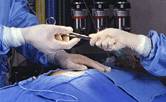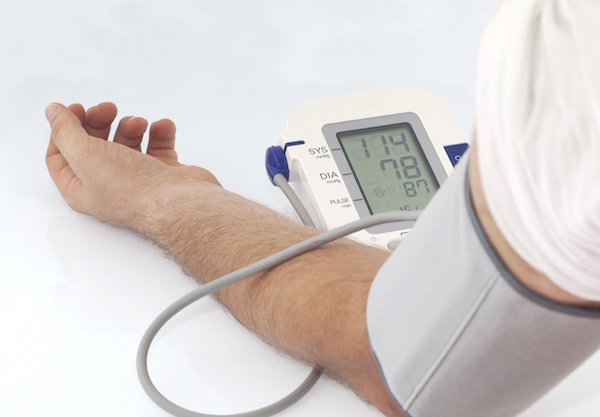
WEDNESDAY, Nov. 27, 2013 (HealthDay News) — An implanted heart pump for people with weakened hearts, called the HeartMate II, appears to be plagued by dangerous clotting problems, a new study finds.
These issues often require arduous device replacements or even heart transplants.
Almost 50 percent of patients who got a clot and did not undergo device replacement or a heart transplant died, the new report noted. And some patients needed the device replaced more than once.
Exactly why this problem is occurring isn’t clear, but it is most likely a fault tied to mechanical changes made to the device itself, lead researcher Dr. Randall Starling, a professor of medicine and vice chairman of cardiovascular medicine at the Cleveland Clinic’s Heart & Vascular Institute said.
“This is a question we are going to answer,” he said. “We think that we saw a pattern when the change occurred. We think it’s something about the device that has changed.”
According to Starling’s team, the problem started cropping up in March of 2011 and continues to occur. In their study, his team tracked patients at three hospitals that implant patients with the devices, and found that 66 of 837 patients developed the clotting problem.
According to Starling, California-based Thoratec Corporation, the maker of the device, started seeing the problem when they changed the bearings in the pump. However, Thoratec has not been able to pinpoint this as the cause, Starling said.
Another possible explanation is the speed at which the pump is run. If it is set too low, clots may develop from the heat of the pump as the blood flows slowly through it, Starling theorized.
Initially, patient behavior was thought to be playing a role, Starling said. That’s because people who have the HeartMate II implanted must stick to a regimen of anti-clotting drugs such as warfarin or aspirin. However, Starling said that careful examination of Cleveland Clinic patients ruled out medication non-adherence as a contributing factor.
Starling has notified the U.S. Food and Drug Administration, which has been considering the problem. “They are aware that we plan to study this further,” he said.
As for patients, they and their doctors should be aware of the clotting issues associated with the device, Starling said.
“Two years ago, when a patient had a HeartMate II and had persistent heart failure, clotting in the pump wasn’t on my list as something that was going on,” Starling explained. “Now when I see a patient with a device that doesn’t appear to be doing the job it was intended to do, I have a heightened awareness that there could be pump[-related] clotting.”
The report was published online Nov. 27 in the New England Journal of Medicine.
Patients who receive a HeartMate II are those whose hearts are too weak to pump blood effectively, but who are not candidates for a heart transplant because of age or other medical conditions, such as diabetes, kidney disease or cancer.
In addition, the device has been approved as a bridge to a transplant. So some patients waiting for a heart transplant get the device to keep them alive while they wait.
The HeartMate II is a ventricular assist device (VAD) that helps patients whose hearts are too weak to pump blood. The device does not replace the pumping action of the heart, but rather assists it.
The device is implanted in a patient’s ventricle — the lower chamber of the heart. A part of the device that includes the battery, the power supply and a controller to monitor the device remains outside the body.
The VAD runs on battery power or can be plugged into a wall socket.
According to Dr. Charles Klodell, an associate professor of surgery and director of the LVAD program at the University of Florida in Gainesville, the pump itself costs about $120,000 and there are hospital and other services that add another $100,000 to the cost.
The procedure is covered by most insurance, including Medicare, he said.
Klodell wasn’t overly alarmed by the new findings. “These centers have had a little blip in their data,” he said.
According to Klodell, a national registry for these implants, called INTERMACS, hasn’t seen an increase in clotting with the device. In fact, they have seen a substantial decrease, he said.
“We have not experienced this in my center or in others whose data I am familiar with,” Klodell said. “I think it is something we all need to pay attention to, and we need to keep an eye on the data, but this doesn’t change my thought process on VADs or the HeartMate II,” he said.
In addition, Klodell noted that without the device these patients’ prognosis would be extremely “grim.”
For the study, Starling’s team collected data on 837 patients who received the device from 2004 through mid-2013.
They found 72 clots occurred in 66 patients. Beginning in March 2011, the number of patients experiencing clots three months after the device was implanted jumped from 2.2 percent to 8.4 percent by January of 2013.
Before March 2011, the average time clots appeared after implanting the device was 18.6 months. After that, clotting started appearing at 2.7 months after implantation, they noted.
Among patients who developed clots, 11 needed heart transplants, with one of these dying in the month after the transplant. Another 21 patients received new pumps.
Of those who did not receive a new pump or new heart, 48 percent died.
The device’s maker defended its safety profile.
“The HeartMate II is the most widely used and studied device of its kind; it has been implanted in more than 16,000 patients worldwide and has demonstrated excellent clinical outcomes,” according to a statement by Thoratec Corp.
“In fact, since the initial clinical trial, survival has improved, quality of life has remained consistently high, and complication rates in general have declined,” the statement said.
There are a number of factors that could contribute to clotting, the company said, including underlying patient condition, ongoing patient and device management practices, pump implantation technique, and device-related factors.
“We have performed extensive analysis on HeartMate II and have not identified any change that would cause the increase observed in the INTERMACS registry,” Thoratec said.
More information
For more information on ventricular assist devices, visit the U.S. National Heart, Lung, and Blood Institute.
Copyright © 2025 HealthDay. All rights reserved.

